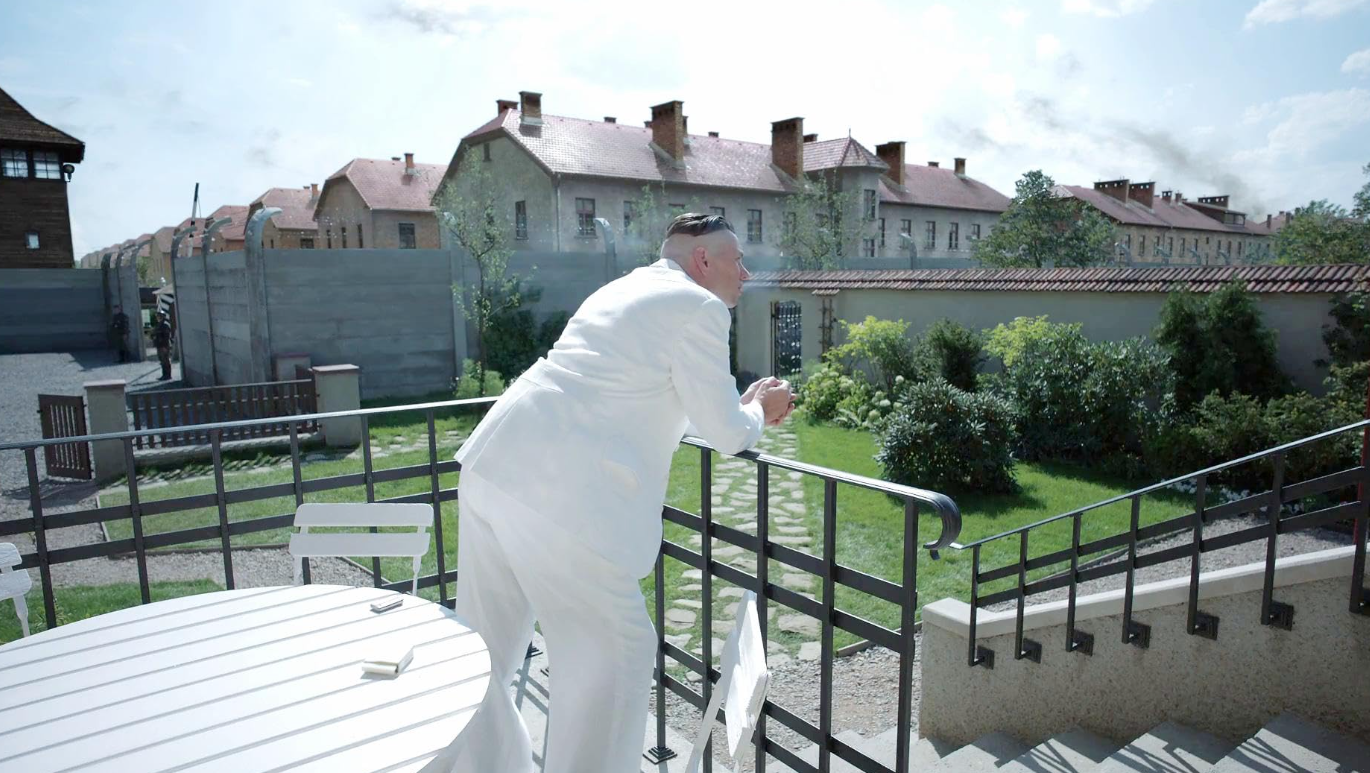The Zone of Interest
The Zone of Interest is playing in theaters at the time of writing. Rated PG-13. Common Sense says 13.
STORY: A+
Writer-director Johnathan Glazer pushes horror to its highest level by keeping it out of sight.
Based on an actual family, the Hoss family has worked hard in order to build a nice home and to provide a great life for their kids. One day, Hoss’s boss tells him he will be transferred to another city. With their “perfect” life threatened, Hoss needs to find a way to keep his family happy and in their beautiful home.
That may not sound like a typical horror flick. Most streamers won’t file The Zone of Interest under “horror” either. We don’t witness any disturbing gore because it takes place on the other side of the Hoss’s backyard wall: in the Nazi-run Auschwitz concentration camp.
The camera never enters the death camp. It stays on the other side of the wall where life rolls along lazily, where the biggest worry is whether or not lunch will be served on time.
The realization that these two worlds were able to co-exist so closely to each other is utterly terrifying.
PEOPLE: A+
Christian Friedel and Sandra Hüller give perfectly calibrated, perfectly ordinary performances.
Most Nazis we see on film are exaggerated monsters. But here, both actors choose to center their performances as people striving for the upper-middle class. Anyone who does the same in this country (or any other) will see a lot of themselves in the Hosses.
Rudolf Hoss follows his boss’s orders and works hard, putting in lots of extra hours to provide his family with a good life. He just happens to be the director of Auschwitz’s death camp. His wife Hedwig stays busy by having the gals over for lunch, planning her son’s birthday party, and filling her closet with the latest fashions. Hedwig’s new clothes just happen to be taken from Jewish inmates.
Those who are able to see so much of themselves in the Hoss family will find it hard to fully demonize them. That dilemma is one of many things that makes this film so powerful.
FILM NERD STUFF: A+
The terror seeps in through the exquisite sound design.
The Hoss’s backyard wall may keep the barbaric violence out of sight, but it can’t keep out the sound. Dogs bark. People scream. Gunshots stab the air. Countless souls wail and weep through the night.
The sounds flood our brains with pictures and footage we’ve seen from the Holocaust.
Words aren’t able to explain how sickening and unsettling it is to watch the Hosses chase their version of the American Dream while all of that suffering and agony wades through in our minds.
The despair really rises to the surface whenever we hear the birds sing (which we do often). The same birds who serenade us as we walk down sidewalks lined by white picket fences. The same birds who can up and fly away from this living hell whenever they wish.
THE LIFE YOU CAN SAVE (Elective Class): A+
The Hoss’s wall forces us to ponder the invisible walls that surround us today.
There’s a book called The Life You Can Save by Peter Albert David Singer. His thesis can be illustrated in a thought experiment he shares in it.
Imagine you just bought a $100 pair of new shoes. You’re walking down the road, your new kicks gleaming in the sun. You pass a pond, and you suddenly see a kid drowning. There’s no time to waste if you’re to save him.
Would you jump into the pond with your new shoes on (which would likely ruin them) and save the kid? Singer guesses that most of us would choose to save the child and ruin your shoes. $100 bucks down the drain, but a life has been saved.
But then SInger turns up the pressure. He asks, what if you had to choose between donating $100 to a charity that can save a handful of children’s lives on the other side of the world or buying a cool new pair of shoes. What would you do? A lot of us may say, “I would donate the money, of course! What kind of person do you think I am?”
But would you? Do you? How often do you buy something you don’t really need instead of sending that money to an organization that will provide kids in Africa with mosquito nets, thereby preventing them from getting malaria and dying (which is something you can actually do, by the way)?
I confess. Altough my family and I give a decent amount to charity, I also spend a whole lot on things I want but don’t need. On things that I would give up in a heartbeat if I happened to walk past a drowning kid.
The problem is that we often get so caught up in chasing the life we want, that we don’t “see” all the other places our money may do more good. The Hoss’s backyard wall (which actually existed in the Hoss’s yard) acts as a symbol for all of the “walls” which stops us from seeing the suffering our prosperity inflicts on others. Distance is a wall. Ignorance is a wall. Turning a blind eye is a wall.
To be clear, I’m not calling you or myself a Nazi! But I think we could make a better world by examining the things that keep us from seeing the humanity in others.
FINAL COMMENTS:
Glazer isn’t calling us Nazis either. But he does want to show us that while they committed unfathomably horrible acts, they weren’t the monsters you usually see in movies. They were just people. People who looked and acted a whole lot like us.
The Zone for Interest is a masterpiece and the most powerful film I’ve seen in ages.


